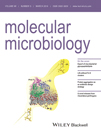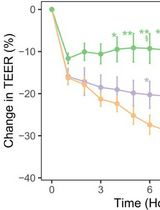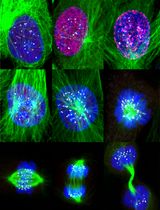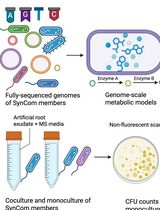- EN - English
- CN - 中文
Protocol for HeLa Cells Infection with Escherichia coli Strains Producing Colibactin and Quantification of the Induced DNA-damage
用可产生大肠杆菌毒素的大肠埃希杆菌菌株感染HeLa细胞的实验方案及诱导产生DNA损伤的定量
发布: 2017年08月20日第7卷第16期 DOI: 10.21769/BioProtoc.2520 浏览次数: 12455
评审: Kanika GeraAnonymous reviewer(s)
Abstract
Strains of Escherichia coli bearing the pks genomic island synthesize the genotoxin colibactin. Exposure of eukaryotic cells to E. coli producing colibactin induces DNA damages, ultimately leading to cell cycle arrest, senescence and death. Here we describe a simple method to demonstrate the genotoxicity of bacteria producing colibactin following a short infection of cultured mammalian cells with pks+ E. coli.
Keywords: Escherichia coli (大肠埃希杆菌)Background
Colibactin is a genotoxin discovered in extra-intestinal pathogenic, commensal and probiotic strains of Escherichia coli (Nougayrede et al., 2006). Colibactin is also produced by other Enterobacteriaceae, including Klebsiella pneumonia, Enterobacter aerogenes and Citrobacter koseri (Putze et al., 2009). Colibactin is a polyketide/non-ribosomal peptide hybrid compound, synthesized by a multi-enzymatic machinery, consisting of polyketide and nonribosomal peptide synthases (PKS and NRPS), tailoring and maturation enzymes, and an efflux pump (for a review: Taieb et al., 2016). This synthesis machinery is encoded on a 52 kb genomic locus, the ‘pks’ island. Colibactin induces DNA damages in eukaryotic cells infected with pks+ bacteria. The genotoxic effect induced by colibactin requires a direct contact of live pks+ bacteria with the eukaryotic cells. Indeed, no genotoxic effect is observed with killed bacteria, or with bacterial supernatants or lysates. Thus, to demonstrate the genotoxicity of colibactin producing E. coli, cultured mammalian cells (such as HeLa cells) are infected during 4 h with live pks+ bacteria. The dose of colibactin delivered to the cells varies with the number of infecting bacteria per cell (multiplicity of infection, or MOI). At the end of the 4 h infection, bacterial growth is monitored by optical density measurement (OD600 nm). Then, the cells are washed to remove the bacteria and further incubated three days with antibiotics, to allow the development of the cytopathic phenotype associated with the DNA damage. The cellular DNA damage response results in proliferation (cell cycle) arrest, cell death and senescence (Secher et al., 2013). The microscopic observation of the cell morphology reveals the cellular response to the genotoxic insult, with reduced cell numbers and a striking giant cells phenotype (called megalocytosis) due to the cell cycle arrest and cellular senescence. The genotoxic effect can be quantified by staining the cells with methylene blue, extracting the dye and measuring the optical density at 660 nm (De Rycke et al., 1996).
Materials and Reagents
- Tissue culture plate 96 wells flat bottom (P96) (Corning, Falcon®, catalog number: 353072 or equivalent)
- Culture flask 250 ml, 75 cm2 (Corning, Falcon®, catalog number: 353136 or equivalent)
- Paper towel
- HeLa cells (ATCC, catalog number: CCL-2 )
- pks+ Escherichia coli strain (stored in LB 20% glycerol at -80 °C). Strains typically used as positive controls in the authors’ laboratory are probiotic strain Nissle 1917 or the commensal mouse strain NC101
- Lennox L broth base (LB medium) (Thermo Fisher Scientific, InvitrogenTM, catalog number: 12780029 )
- Glycerol (Sigma-Aldrich, catalog number: G5516 )
- Dulbecco’s modified Eagle medium (DMEM) with 25 mM HEPES (Thermo Fisher Scientific, GibcoTM, catalog number: 42430 )
- Hanks’ balanced salt solution (HBSS) (Sigma-Aldrich, catalog number: H8264 )
- Dulbecco’s modified Eagle medium (DMEM), high glucose, GlutaMax Supplement, pyruvate (Thermo Fisher Scientific, GibcoTM, catalog number: 31966021 )
- Fetal bovine serum (FBS) (Thermo Fisher Scientific, GibcoTM, catalog number: 10270106 , or equivalent)
- Non-essential amino acids solution (NEAA) 100x (Thermo Fisher Scientific, GibcoTM, catalog number: 11140035 )
- Gentamicin solution 50 mg/ml (Sigma-Aldrich, catalog number: G1397 )
- Paraformaldehyde (PFA) 20% (Electron Microscopy Sciences, catalog number: 15713 )
- Dulbecco’s phosphate buffered saline (PBS) (Sigma-Aldrich, catalog number: D8537 )
- 10x PBS (Sigma-Aldrich, catalog number: D1408 )
- Methylene blue (RAL DIAGNOSTICS, catalog number: 310950 )
- Tris-HCl 1 M pH 8.5 (Teknova, catalog number: T1085 )
- Hydrochloric acid (HCl) 1 M (Merck, catalog number: 109057 )
- HeLa cell culture medium (see Recipes)
- Fixation solution (see Recipes)
- Methylene blue staining solution (see Recipes)
- Methylene blue wash buffer (see Recipes)
- Methylene blue extraction solution (see Recipes)
Equipment
- Micropipette Research Plus 0.1-10 µl (Dutscher, Eppendorf, catalog number: 035602 )
- Micropipette PIPETMAN G 20-200 µl (Dutscher, Gilson, catalog number: 066811 )
- Multichannel micropipette 30-300 µl (Dutscher, Finnpipette, catalog number: 050667N )
- Incubator for bacterial culture, with shaking (Eppendorf, New BrunswickTM, model: Innova® 42 )
- CO2 incubator for cell culture (Forma Scientific)
- Colorimeter to measure the absorbance at 600 nm of bacterial cultures (biochrom, model: WPA CO7500 )
- Microplate reader for absorbance measurement at 600 and 660 nm (TECAN Infinite Pro)
- Vortex (Dutscher, model: Vortex-Genie 2 )
- Inverted microscope (Olympus, model: CKX31 )
- Biological safety cabinets (Thermo Fisher Scientific, Thermo ScientificTM, model: MSC-AdvantageTM Class II )
- Chemical safety hood to handle the fixative
Procedure
文章信息
版权信息
© 2017 The Authors; exclusive licensee Bio-protocol LLC.
如何引用
Bossuet-Greif, N., Belloy, M., Boury, M., Oswald, E. and Nougayrede, J. (2017). Protocol for HeLa Cells Infection with Escherichia coli Strains Producing Colibactin and Quantification of the Induced DNA-damage. Bio-protocol 7(16): e2520. DOI: 10.21769/BioProtoc.2520.
分类
微生物学 > 微生物-宿主相互作用 > 细菌
细胞生物学 > 细胞成像 > 固定细胞成像
您对这篇实验方法有问题吗?
在此处发布您的问题,我们将邀请本文作者来回答。同时,我们会将您的问题发布到Bio-protocol Exchange,以便寻求社区成员的帮助。
Share
Bluesky
X
Copy link












